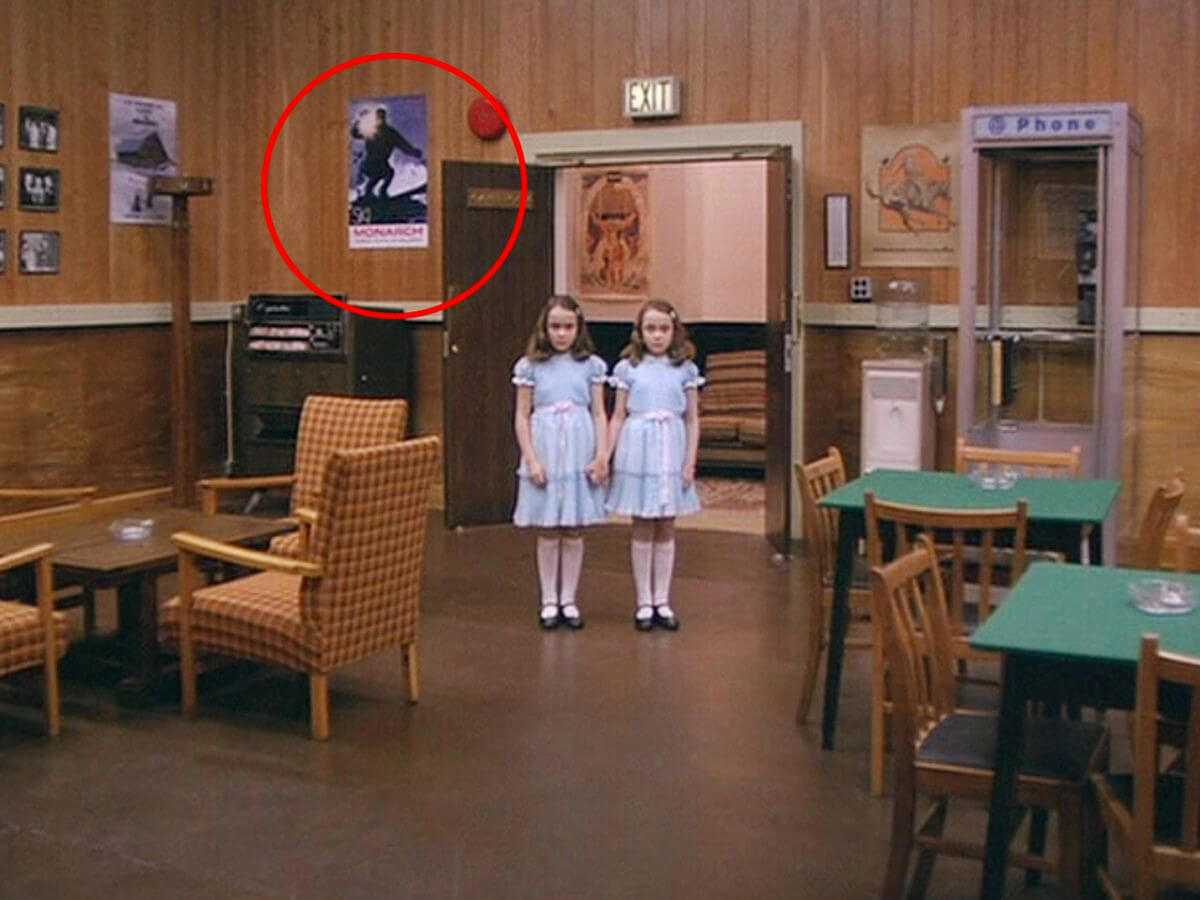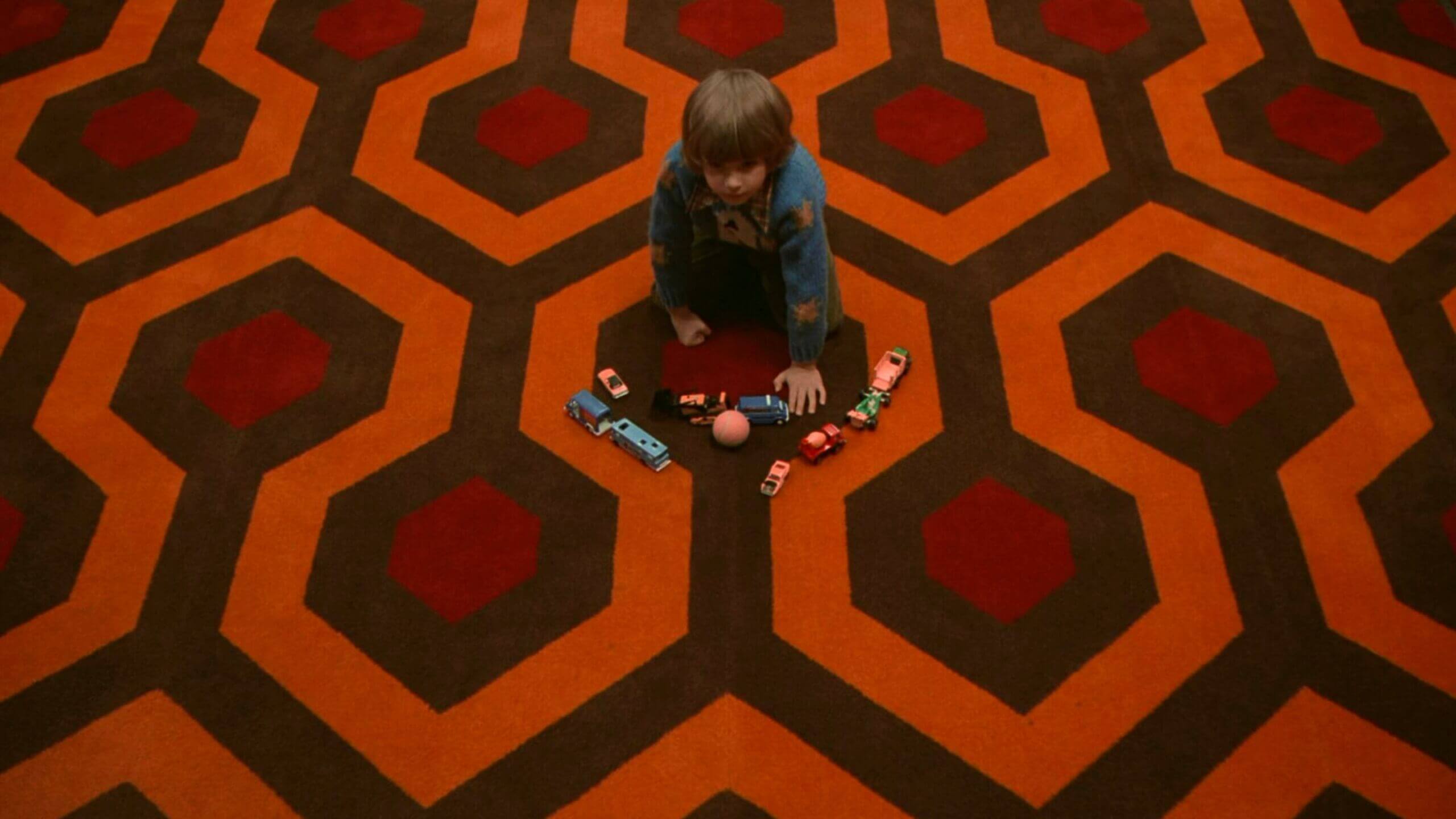Few films inspire as many diverse fan theories and interpretations as Stanley Kubrick’s The Shining. Is The Shining a film that can be definitively explained? Without Kubrick around to spell out his intentions, the answer is probably not. But that hasn’t stopped people all over the world from trying. In this post, we’ll break down the six biggest theories on The Shining, including our own theory that it’s actually a Christmas movie! We’ll explain each theory, why people believe it, and look at the corroborating evidence.
What is The Shining about?
What does The Shining mean?
Before we get into The Shining fan theories, it’s important to acknowledge the source material. One might expect that explaining The Shining could be done by reading the original novel written by Stephen King. But that isn’t exactly true. The novel and subsequent film differ in significant ways.
For King fans, check out our list of the best Stephen King adaptations.
The Shining explained • Differences between the book and film
The truth is, Stanley Kubrick’s The Shining could in no way be called a “faithful adaptation” of the source material. The book and movie are extremely divergent. And Kubrick all but disregarded the novel when making the film.
King famously hated the adaptation in Kubrick’s film because it was such a far cry from his original story. He even sought to create an alternate adaptation of his novel in the form of a television mini-series in the '90s. Here he is discussing said adaptation.
Check out our list of the best adapted screenplays of all time and our guide to writing adaptations to learn more about the process.
Behind the scenes featurette for the mini-series • What is The Shining about?
In attempting to answer "what is The Shining about?" it is impossible not to mention the documentary Room 237. This documentary is an exhaustive cataloguing of all The Shining fan theories big and small. Here's the trailer.
What does The Shining mean? • Room 237 trailer
Some of the interpretations expressed in Room 237 are interesting and hold water. But there are also plenty of ludicrously far-fetched The Shining conspiracy theories that made the cut as well. Below are the six biggest and most popular theories on The Shining explained.
THE SHINING CONSPIRACY THEORY MOON LANDING
Theory #1: The Moon Landing
The Shining moon landing connection is the one theory that extends film and into the life and work of Stanley Kubrick in general. The core of The Shining moon landing theory posits that not only was the 1969 moon landing a hoax, but that Kubrick was the one who constructed the fake footage.
This idea even served as the basis for a mockumentary film from director Matt Johnson called Operation Avalanche.
The Shining theories • Operation Avalanche trailer
This broader theory became directly connected to The Shining as Kubrick’s subtle way of validating the claims. Those who believe The Shining moon landing theory point to Danny's wardrobe. Specifically, the spaceship sweater with “Apollo 11” written on it, which was the name of the rocket used in the moon landing.
Further evidence includes the cases of Tang in the Overlook’s pantry and the otherwise innocuous change from Room 217 in the novel to Room 237 in the film. This is thought to reference the estimated 237,000 miles between the Earth and the moon, even though this number is inaccurate.
This is one of the more popular and widely circulated The Shining theories, but it’s also one of the sillier interpretations. In order to buy into The Shining conspiracy theories in this vein, you need to already be on board with the moon landing being a hoax, which, of course, it wasn’t.
The Shining explained
Theory #2: Native American Genocide
This is one of the more compelling The Shining theories and there is a lot of ancillary evidence to support it. Simply put, this The Shining analysis posits that the film is just as much about the genocide of Native Americans as it is about ghosts haunting the hotel.
The aforementioned Room 237 doc covers this theory and the following video digs even deeper into this Native American genocide interpretation.
The Shining explained • Rob Ager explaining The Shining
Here are some of the most obvious clues supporting this theory. The hotel was built upon a Native American burial ground and is decorated with various works of Native American art.
There are also various historical parallels that support the theory that Kubrick wanted to express subtle themes surrounding the genocide of Native Americans. Additionally, lines of dialogue such as “white man’s burden” further support this association.
“White man’s burden” • Film theory The Shining
The Overlook’s construction in the early 1900s and the photograph of Jack in the 1920s both pose interesting clues. These dates line up to the precise year that lightning strikes hit a monument a town wrought with countless Native American deaths.
Believers in this theory also suggest that the tidal wave of blood in the famous elevator scene represents the collective spilled blood of Native Americans.
THE SHINING MIRROR THEORY
Theory #3: Hell
This is one of the more straightforward and most believable The Shining theories in circulation. This theory posits that the Overlook Hotel represents hell (or another form of afterlife for the ghosts such as purgatory).
Figurative representations of hell can be found in other horror films, so it wouldn’t be a stretch to imagine Kubrick was doing the same thing.
The Shining explained • The hidden evil of the Overlook Hotel
The horrific happenings, the fact that the Torrance family is trapped, and the suggestion that Jack has been in the hotel for decades support The Shining analysis that the Overlook represents hell.
The layout of the hotel seeming to fluctuate throughout the film is also used as evidence toward this interpretation. Proponents of this theory also point to objects and furniture in the background moving and disappearing between takes as further evidence. However, skeptics would say these could easily be a result of simple continuity errors.
In this interview, Stephen King supports the notion that the Overlook Hotel could represent hell. He also suggests that Kubrick dismissed the notion when King brought it up to him.
Stephen King discusses hell and The Shining • The Shining explained
Perhaps explaining The Shining in this manner falls more in line with the book rather than the film despite the conjecture to the contrary.
THE SHINING MOVIE THEORIES
Theory #4: CIA Experimentation
This next theory also suggests that the continuity errors are actually intentional and represent something different entirely. This is one of the more far-fetched The Shining theories.
This interpretation suggests that the changing layout of the hotel and moving objects are metaphors to indicate that the Torrance family is suffering from hallucinations. The core of this theory suggests that The Shining is secretly about CIA mind control experiments.
Those who believe in this theory point to a particular poster visible on the wall in the background as proof.

The poster in question • What does The Shining mean?
The poster in question depicts a skier, despite Jack being told there is no skiing in the area. On its own, this again seems more like a tiny error rather than an intentional clue. But believers of this theory point to the word below the skier as proof: “Monarch.”
The supposed connection is that “Monarch” is believed to be the codename for one of the CIA’s mind control experiments, though this is mere conjecture.
The Shining explained
Theory #5: Theseus and the Minotaur
This theory goes all the way back to classic Greek myths. Theseus was a king of Athens and one of the legendary heroes of old. He was a figure associated with a variety of grand adventures throughout his life, the grandest of which being his ordeal with King Minos’ minotaur in the labyrinth.
The story of Theseus and the minotaur • The Shining explained
This fan theory posits that Danny is Theseus and Jack is the minotaur in Kubrick’s extended metaphor. The most obvious parallel is that both stories feature their combating opponents showing down in a sprawling maze. A stone labyrinth in the case of the minotaur and a snowy hedge maze in the case of The Shining.
Supporting this theory are the way Danny/Theseus overcomes Jack/the minotaur — which parallel each other to a certain degree but not explicitly. Along with a painting on the wall of the Overlook that could be interpreted as the head of a bull atop the body of a man, though not in a literal sense.
Those who believe this theory point to a handful of other small details. But, to be perfectly honest, every other piece of “evidence” in support of this theory is beyond far-fetched and not to be taken seriously.
THE SHINING SEXUAL ABUSE THEORY
Theory #6 Child Abuse
The last of our The Shining movie theories is the most cogent of the bunch: The Shining abuse theory. It is less of a stretch to consider this interpretation as a distillation of clear subtext on child abuse that some viewers might miss.
However, there are two different levels to this theory, and one is far more apparent than the other. This is also one of the only theories to be supported in part by Stephen King’s novel alongside the figurative representation of hell.
The Shining explained • The Shining abuse theory
Where the clear subtext and The Shining abuse theory diverge is on the type and extent of the abuse. Physical child abuse is clear from Danny’s broken arm, his trauma response, and the words of his child psychologist. But some take the theory farther and interpret the film as a representation of sexual abuse. The same physical abuse evidence is used alongside other interpretable details.
The infamous “bear costume” scene and the quick view of Jack reading a Playgirl magazine are pointed to as evidence that Danny’s abuse goes beyond physical into sexual. Those who believe this theory also suggest that it indicates the events that happen to Danny inside of Room 237, which are not shown to the audience.
UP NEXT
The Best Horror Movie Soundtracks
If you love The Shining, then there’s a good chance that you’re a fan of the horror genre. One strong and memorable element of The Shining that didn’t directly factor into any of these theories was the soundtrack. Both the usage of pre-existing music and the original score composed for The Shining are standouts of the genre. Find out which other movies made it onto our list of the best horror soundtracks, up next.
Up Next: Best Horror Soundtracks →
Showcase your vision with elegant shot lists and storyboards.
Create robust and customizable shot lists. Upload images to make storyboards and slideshows.
